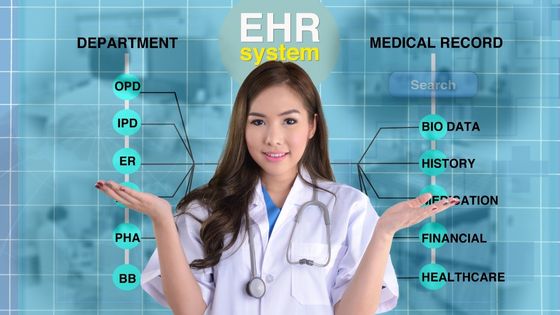There are several different EHR software list guides, each one describing a different feature. Each guide provides information on cost, feature set, interoperability, and cloud-based options. Using the right guide can help you select the best EHR software for your practice. It is a great way to start your evaluation and make an informed decision.
Interoperability
In 2009, CMS launched the Meaningful Use program to help hospitals implement EHR software. It has since changed its name to Promoting Interoperability and continues to undergo incremental changes each year. To remain compliant, hospitals must now self-assess their EHRs against nine SAFER guidelines.

The interoperability of EHR software helps healthcare providers share patient information and improve readmission management. EHR systems with remote patient monitoring capabilities can monitor patients’ health even after they’ve been discharged. Technology can also help distinguish between symptoms that are real and those that are not. It can also provide information on a patient’s condition and history, and identify whether the patient has been admitted to other facilities or not.
To date, the interoperability of EHR software has been an evolving goal, but the Cures Act has made it mandatory for all EHRs to meet a higher standard by 2023. In order to become compliant, EHRs must be ready to work within a “digital ecosystem” of patient-facing systems, enterprise systems, and third-party applications.
Cost
The cost of an EHR system is one of the biggest barriers to its widespread adoption. Beyond the initial cost, there are ongoing fees and expenses to maintain the software. These include hardware and software license maintenance agreements, network costs, and staff education. Some organizations may even need to hire new staff to adapt to the new system.
EHR software also improves communication throughout the healthcare industry. For example, a patient may go to a general practitioner with a lingering health concern, who will then refer them to a specialist. The specialist will then prescribe a medicine. The medication is then filled by a pharmacy.
Finally, the insurance company will bill the patient. An EHR solution streamlines communication between these various channels, so there is little to no interruption in care. Additionally, offices can schedule appointments quickly and easily. Physicians can view important patient information from the EHR and make appropriate adjustments.
Feature Set
In today’s increasingly digital health landscape, an EHR is an important tool for managing patient data. The right software can streamline the process of creating charts, sending prescriptions, and integrating with other applications. It can also provide real-time decision support for evidence-based practice. These features can help health care organizations better allocate scarce resources and accelerate needed changes within the industry.
For example, a good EHR solution should provide remote prescribing capabilities. This feature enables physicians to prescribe medicines remotely while keeping their patients informed about their dosage and side effects. It should also integrate with pharmacies and labs for ePrescription.
Many EHR software applications also offer task management modules, which allow physicians to assign work to the appropriate authority. An EHR should be easy to access patient information, including their medication histories and diagnoses. In addition, it should have tools for improving workflows and reducing errors.
Cloud-based Options
Cloud-based EHR software applications are becoming the preferred choice for many health systems. These solutions have a variety of advantages for medical practices of all sizes and industries, from the flexibility of deployment to increased security and accessibility of data. However, medical practices need to consider the challenges of switching to cloud-based EHR software.
The growth of the market for cloud-based EHR software will be driven by a number of factors, including an ageing population and the rise of chronic diseases. However, concerns over data security and cost of EHR software may hinder growth. On the other hand, the untapped potential of developing countries will provide lucrative opportunities in the coming years.
One of the biggest concerns about cloud-based EHR systems is security. Because of multiple high-profile hacking scandals in recent years, some people worry that data stored in cloud-based EHR systems could be at risk. On the other hand, cloud networks are growing rapidly and are capable of retaining the resources needed to ensure data security. The servers used for cloud-based systems are located in a single location, which makes data more secure than in-house EHR systems.
Reliable Vendors
Choosing a reliable vendor for EHR software is essential for ensuring that the system meets your practice’s needs. It is important to look at the EHR vendor’s history and ask for details. Specifically, you should consider the price of the software over a 7-year period, year-to-year price increases, and transaction costs. It is also important to ask for references, as this can be an important factor in making the decision.
If you’re looking for an EHR system that can help streamline your office’s workflow, you should consider using the Amazing Charts EHR system. It’s built specifically for practices and includes features like patient data integration, charting tools, and scheduling capabilities.
It also integrates telemedicine capabilities and features a complete dashboard. The software is cloud-based and works best with private medical clinics. Moreover, it has specialized features for OB/GYN clinics.
















